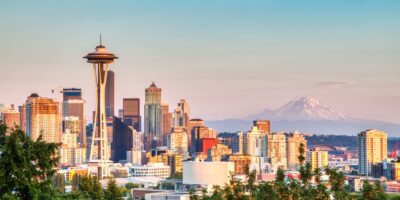The Anatomy of the Crash of 2020

After decades of predictions, warnings, wagers, prophecies, and what must be many trillions of dollars expended upon short sales, long puts and written calls, hedges and directional bets of every sort: the long-awaited “big Kahuna” – a crash in equities markets – came yesterday.
The Dow Jones Industrial Average closed down 2,997 points to 20,188: a -12.93% one-day decline.
I remember the Crash of ‘87 (-22.6% in one day), although I wouldn’t reach the trading desks in the canyons of Wall Street until a bit less than a decade later. My family didn’t have any investments and I really didn’t know what to make of it – other than some people in my blue collar, suburban neighborhood seeming to experience a sudden bout of profound, hideous schadenfreude at the “capitalist pigs.” I read a bit about it, but resources and life being what they were then, my interest soon faded.
Others, mostly in the media, worried that a recession would shortly follow. One did, but by the time it arrived the Dow Jones Industrial Average was far away from those lows. I was far away, too: Hundreds (and sometimes thousands) of miles from New York City and New Jersey, and about as far from financial markets, derivatives, and trading as one can get: as an infantryman in the United States Army. Markets, the crash, all of it – never part of my life, anyway – couldn’t have been further from my mind.
Some years later I returned: not just to the tri-state area, but to the very arenas which not many years before I had heard so much ire and loathing directed at. The Dow was at 5,000, a handful of new “dot com” stocks were undertaking initial public offerings and vaulting to supreme heights on their first day of trading. (“Don’t get used to this; it’s not usually like this,” was the advice frequently offered by older traders.)
Far from being uncommon, volatility came frequently, whether in certain sectors or hitting the entire market. There were concerns about the market rising too quickly, or too slowly; there were debates over valuation, then debates over the debates over valuations; and then a few years in a private hedge fund in Connecticut with a Nobel Prize winner or two as advisors got in big trouble and I saw real market turmoil: rarely the worse for wear, but over time wiser, gaining experience.
There must have been some point at which I asked, or was told, or read, what a “crash” was. Today, any time the market declines sharply, a few hundred points, it’s breathlessly described as a crash. What I was told – now decades ago – is that a crash is a decline of more than 10% in a single trading session. Most of what have been called “crashes” have not been. Not the decline when markets re-opened after 9/11 (-7.13%); not the sudden drop when the bailout bill was rejected on September 29th, 2008 (-6.98%); not the May 6, 2010 “Flash Crash” (which doesn’t even register in the top 20 of point losses or percentage losses); and certainly nothing that was predicted the day that Trump unexpectedly defeated Hillary Clinton in the 2016 Presidential election. (The day after the election, US equities rose slightly more than 1%.)
Yesterday’s fall constitutes a stock market crash. The Crash of ‘29, which took place over two days – October 28th and 29th, 1929 – respectively netted daily returns of -12.82% and -11.73%. Yesterday’s fall in prices (as conveyed through stock indices) of -12.93% is bested only by the Crash of 1987 (-22.6%).
A lot of people (people that I know, at least) are saying that a fall of this magnitude is long overdue. Some believe that a sharp, painful decline in indices serves to wring out excesses by driving the “weak hands” – investors or traders with few funds, who are usually leveraged and easily driven to sell – out of the market. Others convey that a price correction of significant magnitude is essential to the continued appreciation of prices. By what measure? There were 58 years between 1929 and 1987, and as someone who saw three-quarters of the period between the 1987 crash and yesterday’s: we may not have had a severe decline meeting this particular definition, but we certainly had more than our share of volatility.
Most market declines, and certainly all crashes, bring about some form of political opportunism. For countless Americans to whom tales of the Great Depression were passed, the connection between the Crash of ‘29 and the ensuing economic collapse is inseparable. (Less successful were attempts to connect the 1987 crash to the 1990-1991 recession.)
Causation
The collapse in ‘87 has been attributed to many causes, foremost among them automated strategies that had by some accounts become disproportionately impactful forces within financial markets. Often cited among those are portfolio insurance and index arbitrage. And over the years I’ve met and worked closely with NYSE floor traders who extended the thread of causation to everything from comments made by then-Treasury Secretary James Baker on the weekend before the crash to a number of apocryphal “fat finger” errors.
Exactly this again. Algorithms, derivatives, “speculators,” “greed,” margin calls, the lack of a fabled “Plunge Protection Team” to act, villainous hedge funds, and every other pathetic explanation or conspiracy theory will, over the next few months, be dragged out, dusted off, and touted to explain the recent declines.
The better explanation is vastly simpler.
Since Trump’s election, there has been a contingent who have sought to blame the President any time the market declines; many of them simultaneously, and shamelessly, crediting Obama for the longer-term bull market and the strong economy. Having said that, a decisive portion of yesterday’s historic decline – the second largest percentage decline ever for the Dow Jones Industrial Average, and the largest ever for the NASDAQ – should be laid at the feet of Trump.
The original plan, evidently, was to hold the press conference – a release of updates from the Coronavirus Task Force – at 10:30am; the meeting was then moved to 3:30pm before being moved back to 3:15pm. In any case, the current administration seems to have not learned from countless previous Administrations that news which is likely to foment volatility is better delivered after market hours. Oval Office addresses (and other major announcements) have typically been made at 8pm EST to maximize viewership, not interrupt dinners or after-school activities, and not unnecessarily roil markets.
Whether the President’s advisors are unaware of that or he for whatever reason refused to heed them, it comes across, flatly, as bumbling and amateur. A look at the intraday chart from yesterday tells the tale: the market was down on the day, and mostly stable – down between 7 and 8 percent for most of the afternoon. And with a few comments about a recession in the immediate future, and additional comments about essentially shutting down the U.S. economy until August, we find ourselves here: with the first stock market crash of the 21st century, 33 years after the last one.
Remember What’s Real
It is not exactly true, as is often said at these times, that stock prices and volatility in various financial markets have no bearing upon, or don’t reflect, the “real world.” Most people, understandably, don’t make the connection between things they encounter in their daily lives and such arcane economic functions as price discovery, fund mobilization, capital formation, and the provision of liquidity, but they would certainly feel their absence.
Certainly, people close to retirement who are depending on their 401Ks and IRAs will rightfully be concerned about their financial wherewithal after the drawdown of the last few days – in particular, yesterday. And no doubt across the vast diaspora of financial market participants, professional and amateur, yesterday’s drop made and broke fortunes.
The crash, though – in fact, all of the recent tumult in equity, fixed income, derivative, commodity, and crypto markets – is just the scenery, as it was in 1987 and 1929. If a recession is on its way, it was with or without yesterday’s sharp downturn. The more critical elements are the fear mongering all around us and the seeming effort of politicians from mayors to governors to heads of state to one-up each other in draconian measures.
Domestic military deployments – whatever their rationalization – should chill the spine more than a stock cut down by 25% in a matter of days. And no, most unfortunately, it is not surprising that once again the American people are being told that a massive spending bill must be passed to save the world – without a word of discussion, and absent transparency. In different words, just over ten years after the last time, the colossally insulting banality that a bill “has to be passed to see what’s in it” is again quickly taking form.
The real history of this crash is that the market began to fall exactly as the political class began to panic, speak of shutdowns, demand flight cancellations, talk of closing up and stopping history. Whatever you think about the virus threat, and even if you think all this is justified in the name of stopping the spread, let’s not be confused about what drove this disaster from the beginning: the fear that politics would attack commercial society at its root.
For some years ago, the apocalyptic mentality has been gaining in our politics, with the right wing screaming about rampant immorality, globalism, and the breakdown of nations, while the left has been calling for the end of fossil fuels, wealth, and capitalism itself. They share a common enemy, the free and peaceful commercial society that empowers individuals over collectives. That the social order that has made everyone rich must be destroyed is something on which they agree. And now these gangs are demanding your allegiance in a time of grave crisis.
The calamity before our eyes is beginning to look like some version of their imagined dystopia while the rest of us are left to struggle through this disaster the old-fashioned way, not with ideological delusion but with intelligence, calm, and rational planning for the future. There is indeed a virus among us, one far more damaging than that which goes by the name COVID-19.










